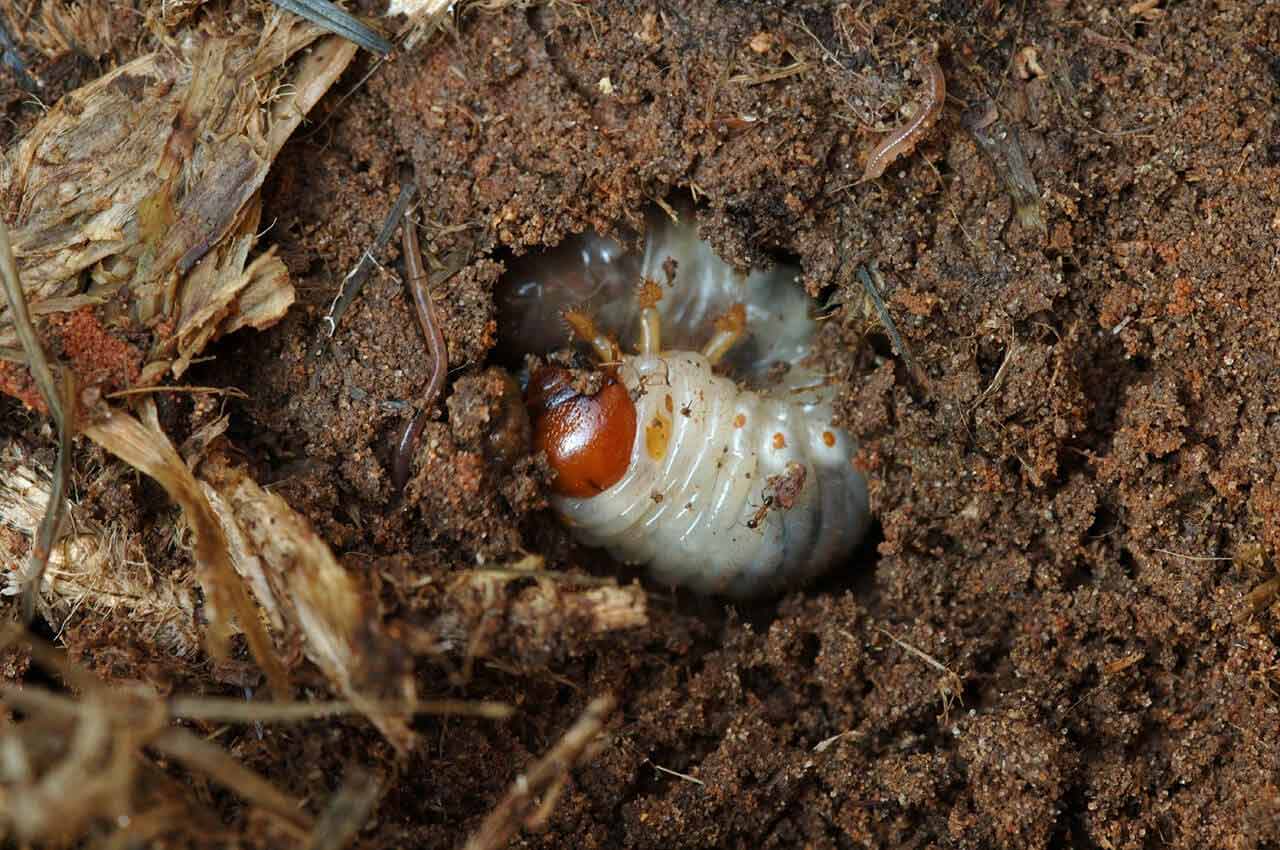Getting Rid of Lawn-Destroying Grubs
Just when you think your lawn has survived summer's stresses, patches of wilted, brown grass sound alarms. Though other problems may be in play, lawn grubs are likely culprits. Grub damage peaks in late summer and early fall, when these underground pests feast on grass roots. To limit the damage they cause, understand your opposition and stay ahead of their grubby games.
UNDERSTANDING GRUB LIFE
Several types of grubs trouble lawns across the United States, but all are the larval, wormlike stages of beetles. Most grub-producing beetles, including Japanese beetles and chafer beetles, which give rise to highly destructive grubs, complete their lives in a single year, wreaking havoc on an annual basis.
The process starts in late spring to early summer, when adult beetles emerge from the ground. Japanese beetles stay active during daylight, mating and feeding heavily on ornamental plants, skeletonizing leaves. Other beetles do their flying at night and don't focus on ornamentals, but heavy beetle activity indicates that grub problems may be ahead.
Adult beetles lay their eggs in the ground in early-to-mid summer. Over a two- to three-week period, a single female Japanese beetle lays up to 60 eggs.1 Eggs hatch about 14 days later, and brand new underground larvae – known as grubs – start feeding on your lawn's roots. Summer rolls on, grubs molt and grow, and your beautiful lawn becomes their buffet.
As fall temperatures drop, so do grubs. They move deeper into soil, where they stay protected until spring, when they move back toward the surface and feed on grass roots until they enter their beetle-producing stage. Then the cycle starts over again.
RECOGNIZING GRUB DAMAGE

Grubs are hard to miss when you examine soil firsthand.
Grubs often go unnoticed until months of extensive root damage reveals itself in late summer and fall. Full-sun lawns that received plenty of water during egg-laying season are usually the hardest hit. Struggling grass can't absorb water and nutrients, so it wilts and turns brown. With the roots severed, grub-infested sod feels spongy underfoot and lifts up like a well-worn rug.
Grub-hungry wildlife in search of a meal add to the insult, turning once-lovely lawns into piles of sod. Raccoons, skunks, moles and birds all feed on grubs and damage your lawn further in the process.
MONITORING GRUB NUMBERS
Healthy, vigorous lawns withstand some grub activity, but a hands-on approach helps prevent potential problems. The easiest way to monitor grubs is to take a look firsthand. Areas where brown grass meet green grass are good places to start. Cut a 12-inch-square piece of your lawn about 2 to 3 inches deep, roll it back and start looking!
Despite differences between species, mature fall grubs are hard to miss. Yellowish-white and topped with brownish heads, the plump, wormlike pests usually curl their semitransparent bodies into a “C" shape. Sizes vary, but Japanese or chafer beetle grubs generally measure slightly more than 1 inch long by fall.2
If more than five grubs are found per square foot, grubs are getting out of hand. Stressed lawns handle even fewer grubs, but even healthy lawns sustain major damage when numbers exceed 10 per square foot.2
FIGHTING GRUB INFESTATIONS
Grub treatments are most effective when grubs are small or feeding heavily near the surface, as they do in late summer, fall and early spring. Prepare your lawn by mowing low, so that treatments can get down into soil more effectively and reach grubs where they feed. If your lawn has thatch buildup, dethatch before you treat, so the heavy organic layer doesn't protect grubs below.

Grub damage increases as grubs mature.
Watch in spring for the arrival of Amdro Quick Kill Lawn Insect Killer Granules. This new addition to your grub-fighting arsenal controls grubs in lawns, ornamental plantings and flower gardens around your home. As an added bonus, it eliminates other pests such as ants, ticks and fleas in the process.
With the help of the Amdro line of pest control products, you can control lawn grubs and the beetle pests they'd produce — and enjoy a beautiful, grub-free lawn all season.
Amdro and Amdro Quick Kill are registered trademarks of Central Garden & Pet Company
Resources:
1. New York State Integrated Pest Management Program, “Grubs in Your Lawn?" Cornell University.
2. Heller, Paul, “White Grubs in Home Lawns," Pennsylvania State University, May 2006.




